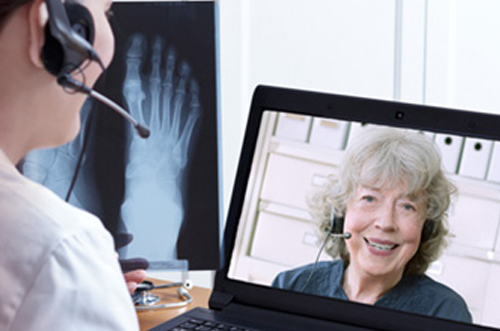About Adventist Health
Adventist Health is a not-for-profit health care organization operating facilities in California, Hawaii, Oregon and Washington with a mission to serve the underserved. To reach the goal of caring for poor, elderly and rural populations, Adventist Health began partnering with AMD Global Telemedicine in 2013 to roll out its telehealth program. This business move enabled Adventist Health to reduce wait times for services and increase access to care for those in need.
Benefits of Using Telemedicine
Hospitals and facilities nationwide have seen various benefits of using telemedicine. Particularly, some of the advantages Adventist Health has noticed over time include reduced barriers to care and increased patient satisfaction. The number of scenarios or situations where patients have to worry about transportation or how they’ll make it to the facility for specialty care has significantly reduced. Additionally, because many patients are already comfortable with social media and digital communication, they have had little to no trouble getting used to the technology.
Adventist Health also found improvements in their outpatient clinical situation with behavioral health in terms of psychology, psychiatry, addictionology and therapy services.
“About 86 percent of our outpatient services are behavioral health,” shared Cynthia Scheideman-Miller, Director of Virtual Care at Adventist Health.
Patients no longer worry that their reasons for visiting the clinic will be exposed. Multiple telemedicine service offerings provided at each clinic make for a more discrete engagement and therefore don’t put an obvious target on behavioral health patients.
“We reduced wait times for services and increased access to care for those in need.”
Cynthia Scheideman-Miller,
Director of Virtual Care at Adventist Health
How AMD Global Telemedicine Has Helped Adventist Health
AMD Global Telemedicine technology has played a vital role in helping Adventist Health grow their telemedicine consult volume by more than 200 percent in just three years. The technology is used throughout their network of clinics to help provide virtual care for patients in need of additional specialists. Moreover, AMD partnered with Adventist to create a seamless integration between telemedicine encounters and a patient’s health care record. Particularly, integrating AGNES Interactive® with their EMR has simplified their data capture and documentation workflow.
“With AGNES Interactive, the snapshots taken during a telemedicine encounter can now be saved directly to a patient’s record, through the EMR integration AMD and Cerner built with us,” Scheideman-Miller said.
Additionally, AMD’s technology allows Adventist Health to customize solutions based on the needs of each clinic, while scalability lets the company build and provide additional specialties as needed.
“With AGNES Interactive®, the snapshots taken during a telemedicine encounter can now be saved directly into a patient’s record.”
Cynthia Scheideman-Miller,
Director of Virtual Care at Adventist Health
Advice For Other Providers Looking To Implement Telemedicine
One of the key factors to Adventist Health’s success was planning. Scheideman-Miller encourages other providers to make sure their desired telemedicine program aligns with the organization’s goals and resources before committing to implementation. Putting in the time and effort to set up the system and working closely with your telehealth vendor are the keys to success. Providers must recognize that while a telehealth tool might have an “on” switch, the process doesn’t stop there. It takes a lot of initial coordination and planning for the implementation team to determine the resources and workflows needed to integrate telehealth. After integration, you should allow about two to three weeks to get the new system up and running and to train your staff staff. Remembering that the process needs to be slow and steady will help to ensure successful implementation from start to finish.
See a video of how a telehealth visit works at Adventist Health





